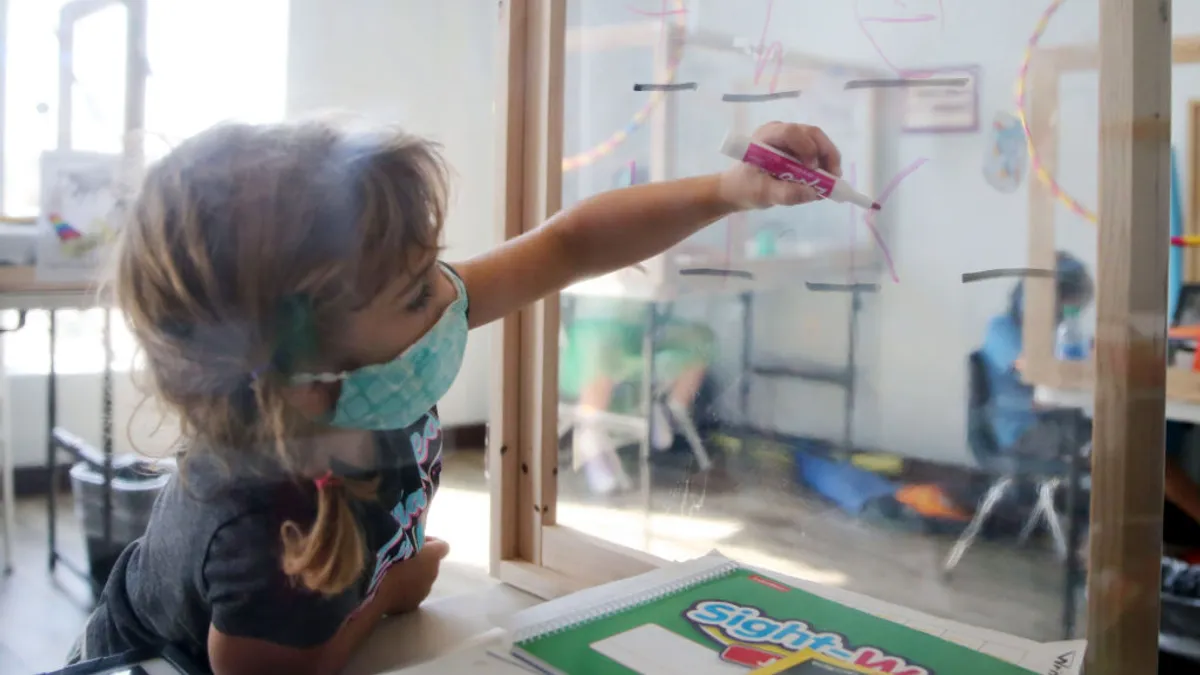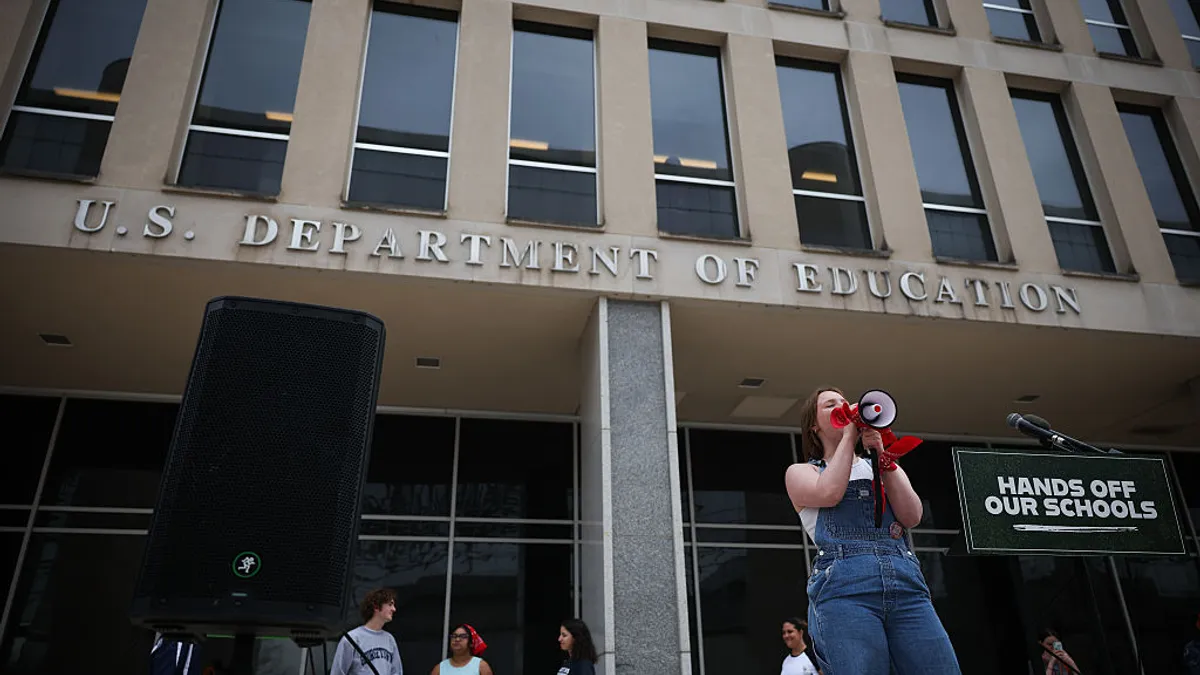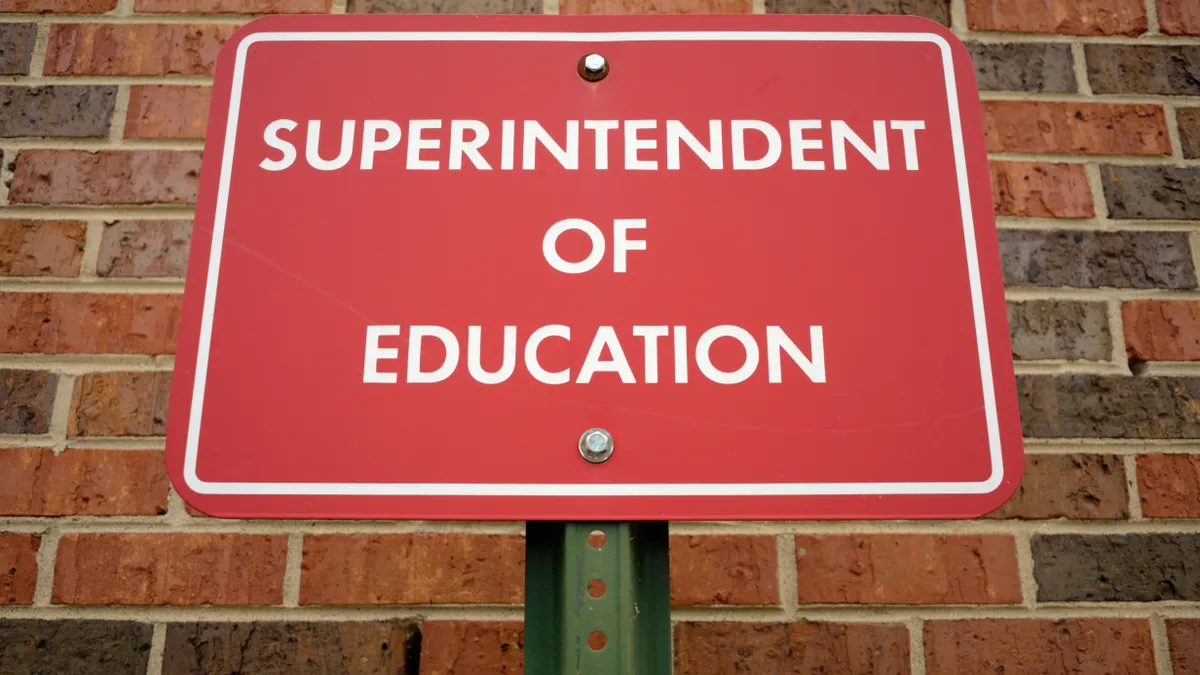Federal aid from the American Rescue Plan, which provided the largest pot of COVID-19 pandemic relief funds for schools to date, is making its way to states. The package, which provided nearly $123 billion through the Elementary and Secondary School Emergency Relief Fund, is prompting district leaders to plan in unprecedented ways for the next three years, as well as prepare for a fiscal cliff once those funds run dry.
"We are anticipating having access to that money immediately," said Michael Hinojosa, superintendent of Dallas Independent School District in Texas. "We have to be very careful because, when this money runs out there is going to be a funding cliff, and so we have to be very careful not to hire a lot of people."
Provide incentive for existing teachers, hire with caution
Hinojosa's wariness of taking on new staff mirrors that of many other district leaders. As a result, the superintendent, who says it was difficult to cut loose staff after federal American Recovery and Reinvestment Act aid expired under the Obama administration, is hiring strategically and with full transparency.
"We might have to hire some, but if we hire, we're going to put them on a contract and tell them they're on soft money," he said. "When the money goes away, their position goes away."
Hinojosa noted it's easier to hire people on stipends or give existing staff extra pay for additional work. The superintendent is especially wary of bringing on new counselors. "Usually counselors come from the classroom, and we don't want to pluck a teacher out that we need in the classroom," he said.
He added that students tend to get comfortable with counselors over the years, making it a position much more difficult to dissolve.
Scott Muri, superintendent of Texas' Ector County Independent School District, is taking another approach. "When I came here two years ago, we had 385 teacher vacancies on the first day of school — more vacancies than any other district in Texas," Muri said. "We have a dearth of talent."
As a result, Muri has focused on building the capacity of existing teachers through a virtual coaching program piloted this semester. Teacher coaches who live around the country dial in virtually on a swivel iPad camera, remotely observe teachers who are instructing students in person, and provide feedback through earpieces. "You have the coach literally in your ear, watching you and providing guidance to improve your craft," Muri said.
Muri expects ARP funds to dry up, but the district will be much better for it at the end of three years, he said. "We now have a cadre of teachers that have raised the floor," he said. "Once we elevate teacher quality to a higher level, we can sustain it using the existing staff that we have."
Summer school and enrichment
Many, if not most, districts are looking to invest in summer programs. Until now, however, summer school has been a bust, Muri said. "For decades, we've been using summer school money ineffectively," Muri said. "I think the traditional view of summer school is a place where students who are not successful go to."
Muri hopes to transform summer school this year, with sustainability built into existing summer school funding. All students PK-5 will have an opportunity to go to school for an additional 30 days this and next summer. There will also be additional programming for middle and high school.
"It's the antithesis of summer school," he said. "It’s summer camp, summer enrichment."
Enrichment, like robotics or art classes, is also Hinojosa's "carrot," he said. "We want the kids to volunteer to say, 'Don’t pick me up at 3, pick me up at 6,'" Hinojosa said, adding his schools also provide students with dinner.
When they aren't in enrichment classes, though, Dallas students will be spending their summer in academic and/or tutoring programs. Hinojosa is using ARP funds to bolster academics in 60 of the district's lowest-performing schools, where after-school time will be from 3-6 p.m.
Strategic new investments
Superintendents are also spending their funds bringing in new programs.
Muri's district is investing in a social-emotional learning curriculum, set to roll out in August. "That’s new for us," Muri said. "We realized we have not well-equipped our teachers to deal with the SEL issues that we see with our students."
The curriculum, a one-time purchase, will be embedded into the district's programming and migrated into its budget if it is effective.
Hinojosa's district is experimenting with nontraditional school calendars. Five of his district's campuses, for example, have opted to completely reinvent their school year, with year-round academics and enrichment. There may be some places, for example, that have continuous school for three months with two weeks off for enrichment.
"Anytime there is downtime, students who are behind will be coming back," Hinojosa said. Dallas ISD is also experimenting with hybrid learning in the long-term, where students attend school in-person but connect virtually with outside instructors or programs for part of the school day.
As a result of the calendar changes, Dallas is also offering accommodation to parents who want to choose to send their kids to campuses other than their designated school. "We had to work with parents to make it a good compromise," Hinojosa said.
Jeff Dillon, superintendent of Wilder School District 133 in Idaho, said he will be using his pot of money to hire staff for one full or two half pre-K days. Dillon said the district plans to conserve funds by purchasing used modulars to serve as pre-K classrooms.
With a fiscal cliff on the horizon, Dillon's decision is a strategic move, as the superintendent suspects Idaho will also fund kindergarten in the next three years, at least for high-poverty communities. The state is currently among a handful that don't require districts to offer kindergarten either full- or half-day. "We’re kind of crossing our fingers," he said.























